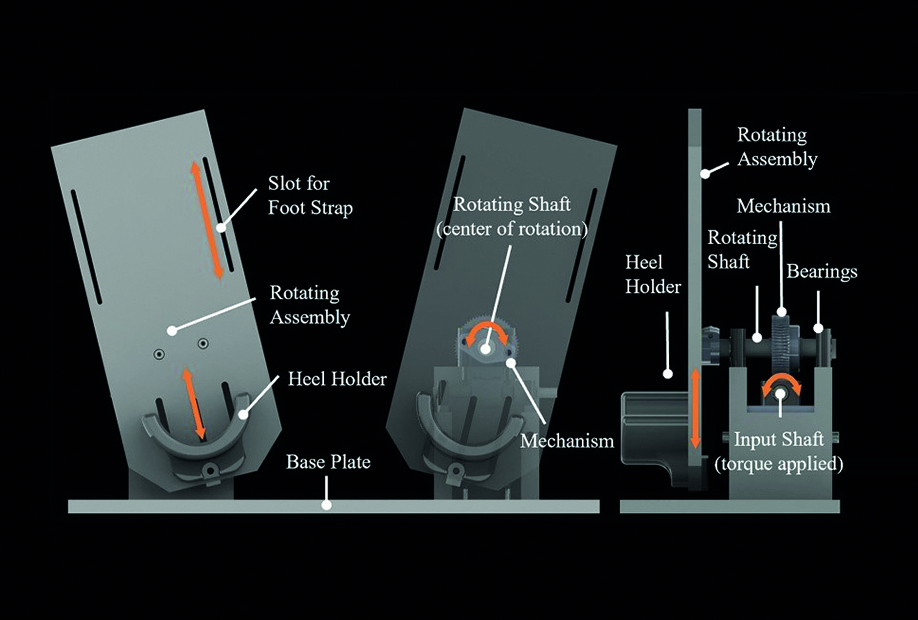Research in Orthopedics
New Diagnostic Tool for Detection of Subtle, Chronic Syndesmotic Insufficiency
The external torque device, which was developed at Balgrist University Hospital, is able to evaluate the syndesmotic ligaments as precisely as an intraoperative lateral hook test.
If tibiofibular syndesmotic injury is undetected, chronic instability may lead to persistent pain and osteoarthritis. Until now, no reliable diagnostic method has been available. The requirements for the ideal diagnostic tool for differentiating subtle syndesmotic insufficiency are 1) sensitive syndesmotic load, 2) three-dimensional evaluation, 3) comparison with the “healthy” contralateral side, 4) low invasiveness and 5) availability/costs.
The external torque device with bilateral CT meets many of these requirements. In a biomechanical study on cadavers, we were able to demonstrate its reliability in detecting one, two, or three ligament injuries with greater sensitivity and similar specificity compared with the arthroscopic lateral hook test, which is considered today's gold standard. In a study on healthy volunteers we were able to show that the contralateral side can be used reliably as a comparative value. A reliable tool for assessing syndesmosis stability is also important to clarify the question of which syndesmotic injuries can be treated conservatively, and which should be better stabilized by surgery. In this regard, we are conducting a study comparing the stability of the syndesmosis on patients with syndesmotic injuries who were treated either conservatively or with surgery. And finally, we are planning new surgical methods to reliably restore the syndesmosis in the event of chronic insufficiency. We consider this scientific invention to be extremely helpful in better understanding the problem of syndesmosis injury.
Diagnosetool zur Erkennung subtiler chronischer Syndesmoseninsuffizienzen
Bleibt eine tibiofibuläre Syndesmosenverletzung unerkannt, kann eine chronische Instabilität zu anhaltenden Schmerzen und einer Arthrose führen. Bislang gibt es keine zuverlässige Diagnosemethode. Unsere Methode erlaubt eine dynamische CT–Untersuchung, die die Gegenseite als Referenzwert heranzieht. Hiermit haben wir in einer ersten Studie an Körperspenden ihre Überlegenheit gegenüber dem heutigen Goldstandard, dem intraoperativen Hook Test, zeigen können. Laufende Studien sollen herausfinden, welche Syndesmosenverletzungen ohne Operation und welche mit Operation behandelt werden können. Zudem werden wir Rekonstruktionstechniken untersuchen, die bei chronischen Instabilitäten notwendig werden.
At a Glance
Bilateral External Torque CT to Detect Syndesmotic Insufficiency
Key Collaborators
Project lead: PD Dr. med. Stephan Wirth
PD Dr. med. Silvan Beeler
Dr. med. Anna-Katharina Calek
Dr. med. Pascal Furrer
Dr. med. Jeroen Grigioni
Dr. med. Bettina Hochreiter
Esteban Ongini
Prof. Dr. med. Reto Sutter
PD Dr. med. Arnd Viehöfer
Departments and Partners
Balgrist University Hospital: Dept. of Orthopedics, Dept. of Radiology, Lab. of Biomechanics
Clinical Relevance
High clinic relevance for syndesmotic evaluation and treatment decision.
Further Information
> The Journal of Bone & Joint Surgery

